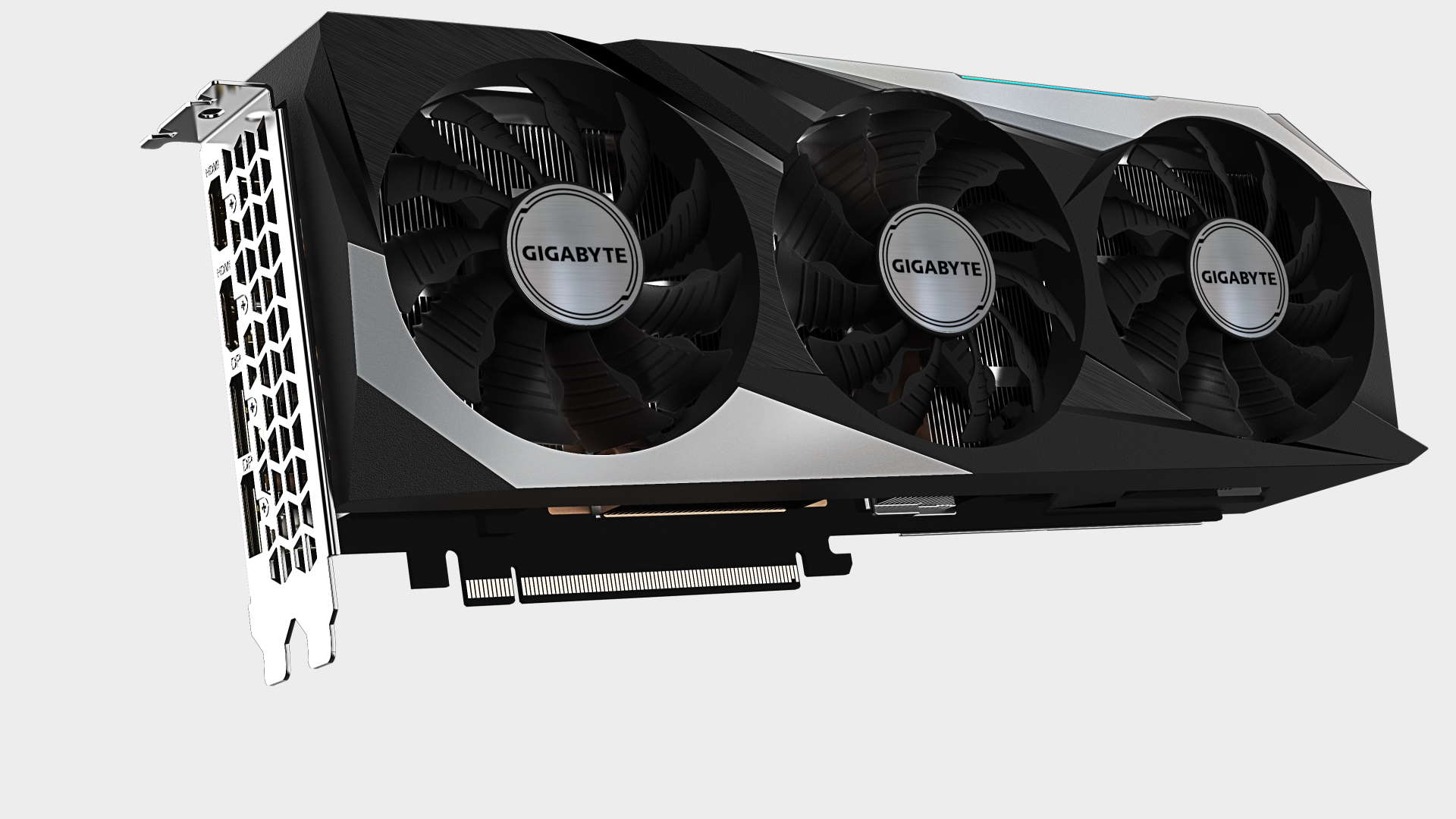Our Verdict
In a disrupted market, the Gigabyte RX 6800 XT Gaming OC doesn’t offer the value it should in order to be a success. Not right now at least.
For
- Good performance on offer
- Dual HDMI 2.1 ports
- Relatively low height
Against
- Too expensive (though subject to significant change)
PC Gamer's got your back
You wouldn't know it, but there actually is a variety of AMD RX 6800 XT models coming onto the market. Just very slowly. Some have mega power delivery systems for overclocking, while others are tuned for silent and cool running. Others still demand to be shown off in all their RGB glory inside windowed display cases. Gigabyte has its high end Aorus designs to address those uses, but there’s still a place for more value-oriented offerings such as this Radeon RX 6800 XT Gaming OC version.
Some people just want solid performance and will simply plug their card in and fire up their games, leaving the card out of sight and out of mind. It’s these buyers who will find the Gigabyte RX 6800 XT Gaming OC card most appealing.
If a particular card isn’t the fastest, or the quietest, or the coolest running though, it must offer good value. In the current market, however, a card otherwise positioned as an affordable one might prove to be impossible.
The RX 6800 XT is the most compelling card out of the three AMD RX 6000-series cards. It’s not a lot more expensive than the straight AMD RX 6800 yet it’s pretty significantly quicker, and a lot more affordable than the AMD RX 6900 XT too.
GPU - AMD Navi 21
Architecture - AMD RDNA 2
Lithography - TSMC 7nm
Base clock - 1,850MHz
Boost clock - 2,285MHz
Memory - 16GB GDDR6
Memory speed - 16Gbps
Memory bandwidth - 512GB/s
Outputs - 2x DP 1.4a, 2x HDMI 2.1
Power connections - 2x 8-pin
Where the RX 6800 XT features a boost clock of 2,250MHz, the Gigabyte Gaming OC features a small 35MHz overclock resulting in a 2,285MHZ boost clock. The memory specifications of the reference RX 6800 XT and the Gigabyte Gaming OC are identical, with 16GB of 16Gbps memory over a 256bit bus.
The Gigabyte RX 6800 XT Gaming OC is one of the more compact cards on the market, not because of its length, but its height. It still protrudes above the top of the PCIe bracket, but its comparatively compact dimensions mean it should be easier to accommodate in slimmer cases. It is still a triple slot card, and at 286mm in length it’s not one for a small ITX case.
The Gaming OC features a custom PCB with dual 8-pin PCIe power connectors and a dual BIOS. The card ships with the default OC setting enabled, while switching to the silent BIOS aims to provide quieter operation with lower clocks, temperatures and noise levels. The Gigabyte logo on the side features the only RGB lighting present on the card. If disco ball laser light shows aren’t to your taste, the Gigabyte's more subtle lighting might work for you.
Notably it comes with a pair of HDMI 2.1 ports to go with two 1.4 DisplayPort connections. Cards with dual HDMI ports aren’t all that common, so it's something to note if that’s important to you.

1440p gaming performance


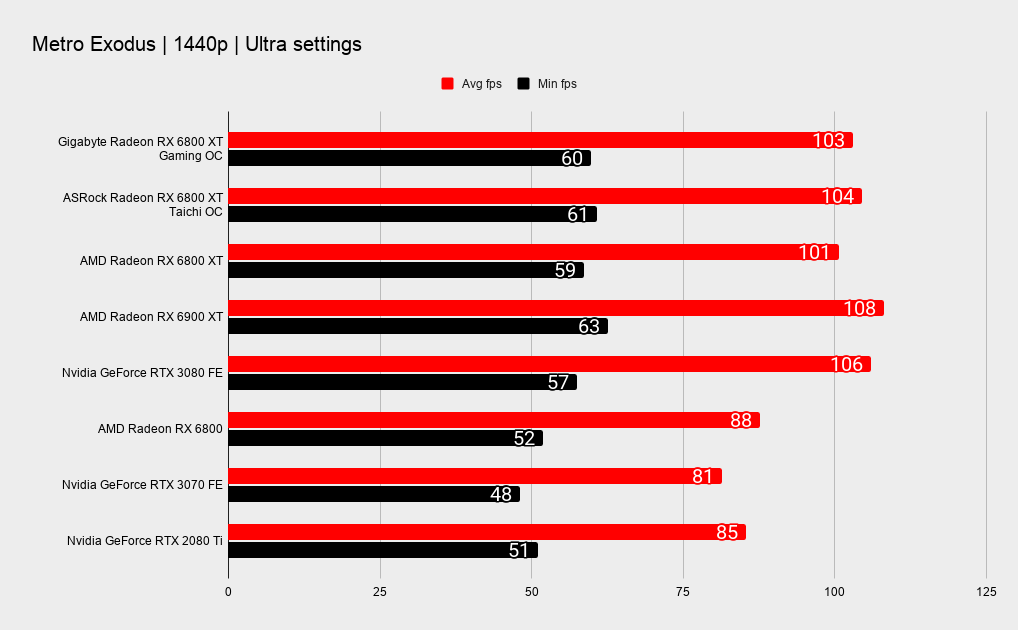
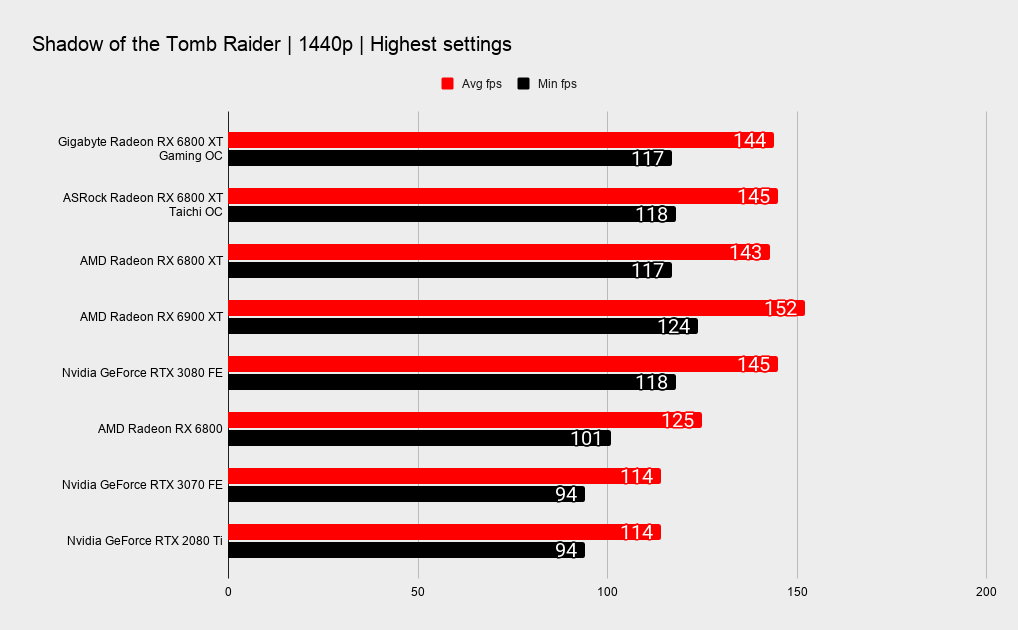
4K gaming performance
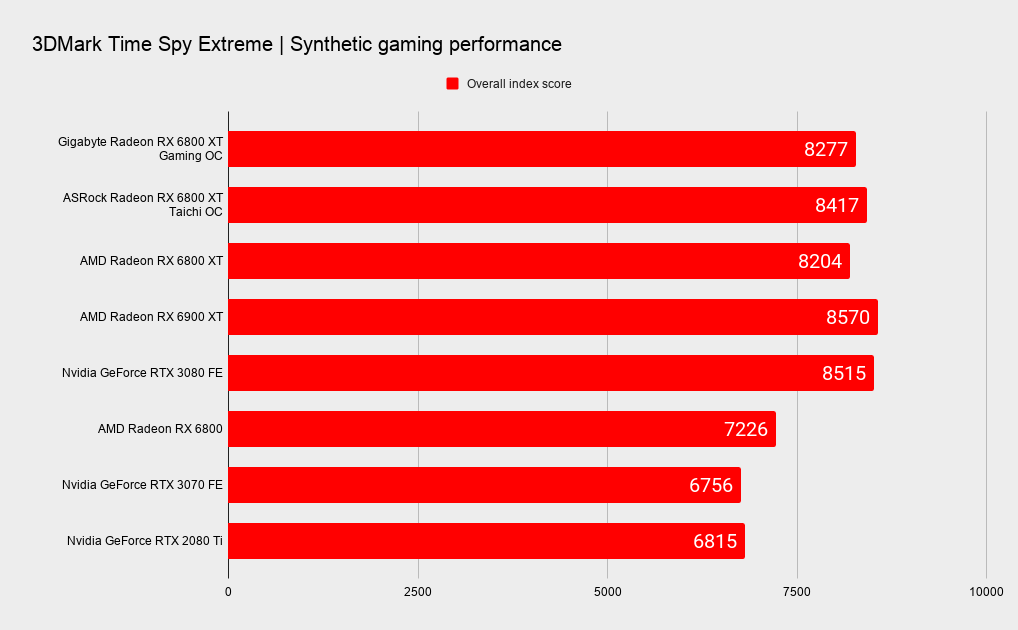
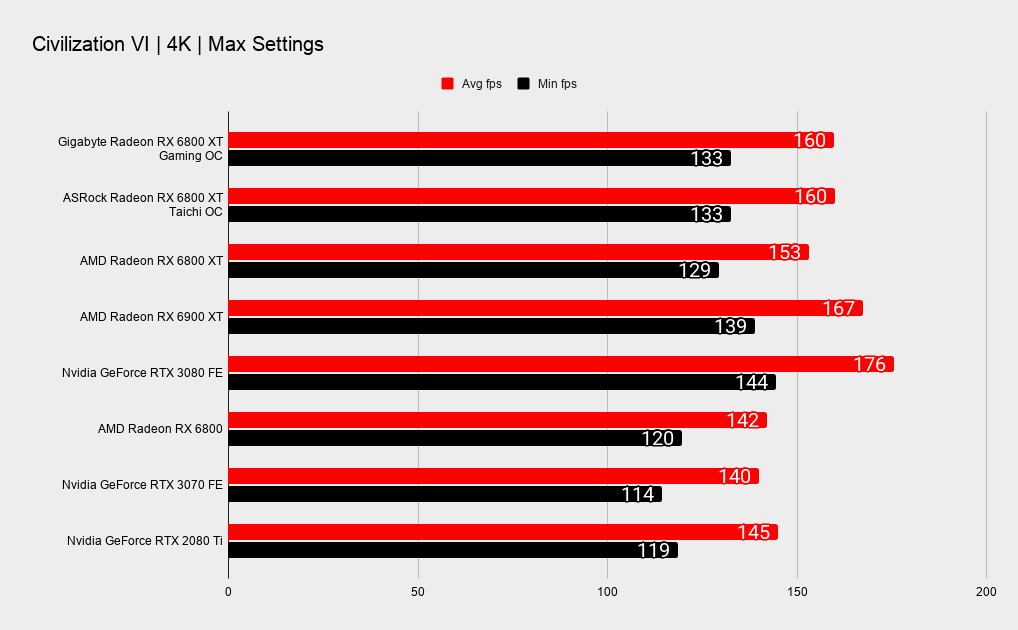

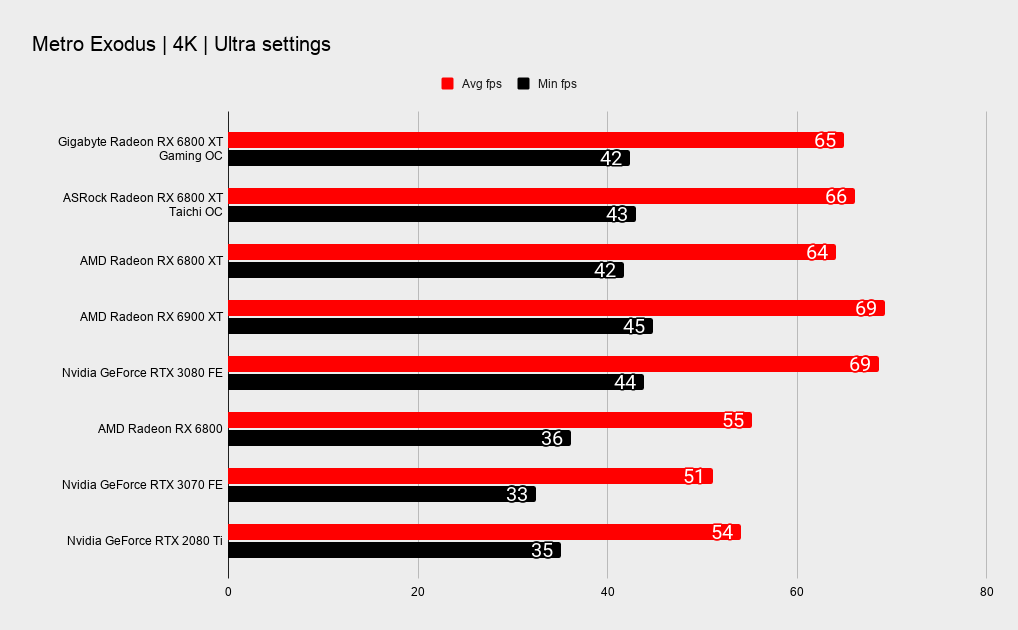

Thermal performance
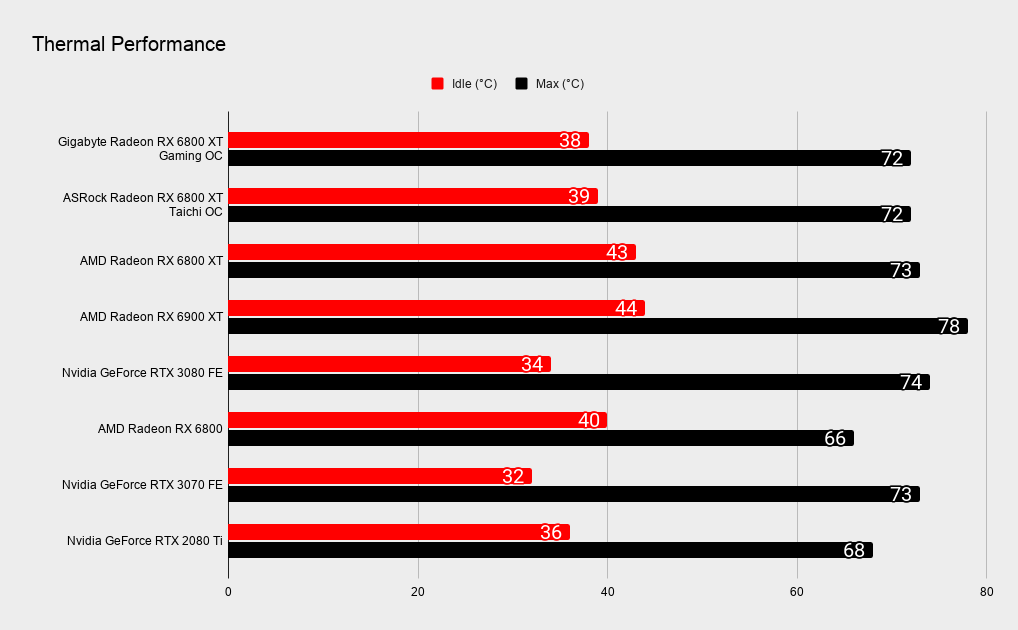
CPU - Intel Core i9-10900K @ 5.1 GHz all cores
Motherboard - Asus Maximus XII Apex
Memory - 16GB Team T-Force Xtreem ARGB 3,600MHz
Power Supply - Corsair AX1000
Storage - 1TB Samsung 860 Pro (OS), 1TB Western Digital SN750 Black (Games)
Cooling - NZXT X73 360mm AIO
Operating system - Windows 10 Pro 1909 64-bit
The Gaming OC uses the company’s stalwart Windforce 3X cooler. Although there are some minor variations between models, it’s essentially the same as the one used on the Nvidia RTX 3080 and Nvidia RTX 3090 Gaming models. It’s proven to handle the higher TDP of those models, so it can easily tame the RX 6800 XT.
The centre fan spins in the opposite direction to the two outer fans, which Gigabyte claims increases air pressure. In our testing It generally performed well, though it becomes more audible than some. We don’t expect this cooler to match the thermals and noise levels of very large surface area coolers, such as those found on cards like the Asus TUF, and we have no complaints. Anyone who ran a Vega blower cooled card will still love the lower noise levels.
When we were testing the card, a couple of surprises were revealed. Despite its relatively low rated boost clock of 2,285 MHz, the Gigabyte was able to hold an average boost clock of 2,350MHz out of the box. Its measured power draw was also a surprise, with a peak of 264W for the GPU itself.
This would indicate that this particular sample contains a strong GPU which allowed the card to boost up to 50 MHz higher than we saw with the reference model, yet with a lower power draw. When you play the silicon lottery, you win some and you lose some. This one was definitely a win!

When it comes to performance, in reality the differences between the reference card and the factory overclocked cards isn’t really notable, with just a frame or two, or a couple of percent of difference here and there. The AMD 6900 XT retains a lead while the RTX 3080 keeps its nose in front in most cases.
The Gigabyte seems to be a bit of an all-rounder card, with decent performance to go along with decent thermals and noise levels, though in general it cannot match cards with larger fans and heatsink surface areas.
The Gigabyte 6800 XT Gaming OC proved to have some more overclocking headroom too, though our results were unspectacular. A test of 10+ minutes to establish a stable boost clock gave us a result of 2,510MHz. That’s a nice bump over a stock card, though still at the lower end of the RX 6800 XT’s we’ve tested. That said, it’s enough to help it pull alongside a 6900 XT, which is a decent free performance bump.
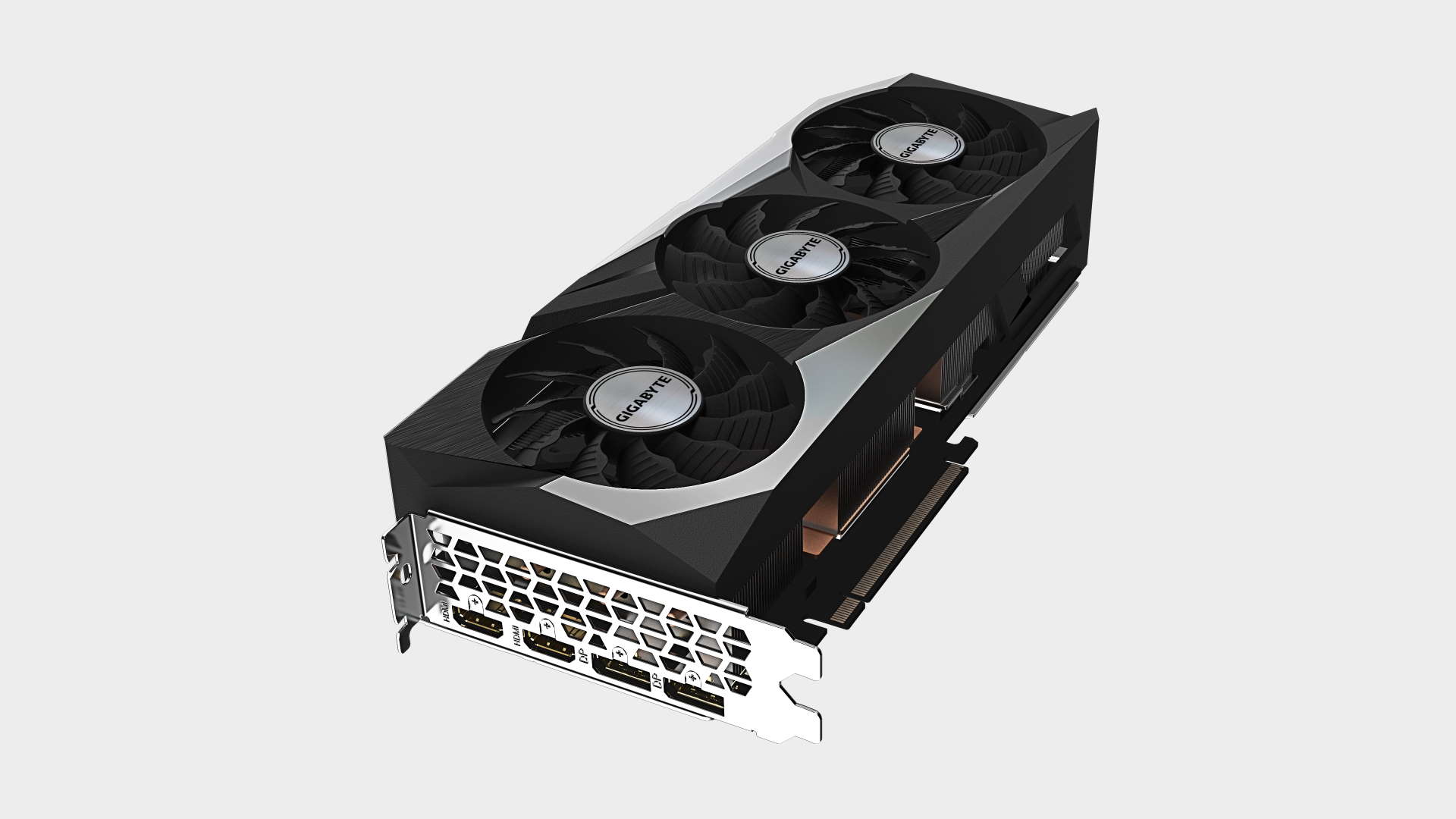
Evaluating the Gigabyte 6800 XT Gaming OC in the currently highly volatile market is still difficult, however. The Gaming OC sits below the premium Aorus cards so it can be considered a competitor or replacement for the AMD reference card. The reference card proved to be very good, and the it’s best reference card AMD has produced in recent memory. The Gaming OC does outperform it, but not really by much. It also runs a bit cooler, but again, not by much. This makes value a primary differentiator right now, and this is the part that makes the card hard to evaluate.
Availability is nothing short of disgraceful. Though, to be fair, that goes for all current high-end GPUs. It seems like the surging value of crypto currencies like Ethereum has made GPU mining profitable again. This, along with possible 7nm capacity constraints and Covid interruptions, makes it hard for this card to maintain a value market positioning. Can we recommend a card that’s selling for $200 above RRP? No, we can’t, but markets change, and the price today might not be the price in a month or three.
So, putting it all together, the Gigabyte RX 6800 XT Gaming OC is a capable if unspectacular card. It will bring a big performance jump if you’re upgrading over a card from a few years ago, but as one of many RX 6800 XTs to choose from, it needs to offer good value to make it a compelling offering. At $850 USD, or more, right now, it doesn’t do it. But maybe check back in a month or two, by then the Gigabyte Gaming OC may well take its place as a solid value offering that we expect it to be.
In a disrupted market, the Gigabyte RX 6800 XT Gaming OC doesn’t offer the value it should in order to be a success. Not right now at least.

Chris' gaming experiences go back to the mid-nineties when he conned his parents into buying an 'educational PC' that was conveniently overpowered to play Doom and Tie Fighter. He developed a love of extreme overclocking that destroyed his savings despite the cheaper hardware on offer via his job at a PC store. To afford more LN2 he began moonlighting as a reviewer for VR-Zone before jumping the fence to work for MSI Australia. Since then, he's gone back to journalism, enthusiastically reviewing the latest and greatest components for PC & Tech Authority, PC Powerplay and currently Australian Personal Computer magazine and PC Gamer. Chris still puts far too many hours into Borderlands 3, always striving to become a more efficient killer.
